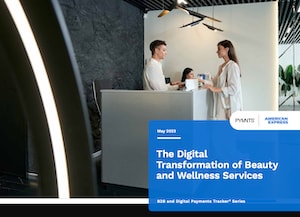December 18, 2023
8 Recruitment Strategies for Hiring Great Employees

Recruiting top talent takes a combination of creativity and diligence. Technology can help make it easier than ever to publish your job postings to a broad audience—but to really connect with quality candidates and drive excitement about the role and your company, you have to find ways to stand out from other employers.
Learning effective recruitment strategies can help you captivate job seekers, create a memorable first impression and hire candidates who meet your needs.
What is a recruitment strategy?
A recruiting strategy is a plan of action to help you successfully identify, attract and hire candidates for your open roles. These are starting points that can help you recruit employees. They range from basic methods, like posting on job boards, to more advanced strategies, such as using a traditional recruiting agency or creating an employee referral program. You can implement recruiting strategies at every step in the hiring process.
Why you need hiring strategies
Filling positions can be challenging, especially for highly skilled roles that require specific degrees or licensure. By expanding your hiring strategies, you can reach more prospective job seekers who could be a good match for your role. Using multiple strategies when you recruit employees could offer benefits, such as:
- Increased number of applicants who meet your requirements
- Shortened hiring times
- Increased company awareness
- Reduce hiring costs
- Better matches for the position, which can improve employee performance and retention
Try the following 8 strategies to help when you’re recruiting employees.
1. Treat candidates like customers
Whether you use phone screening, a video interview or an in-person interview, a candidate’s first impression of your company is critical. It’s important to make them feel like you’re just as excited about getting to know them as they are about being considered for the role. A good recruiting technique is to treat interviewees the same way you treat your customers.
- Be respectful of their time. Always be sure to show up on time for any type of interview. If you’re running late, let the candidate know as far in advance as possible.
- Be hospitable. When a candidate arrives for an on-site interview, ask if they’d like something to drink and show them where to find the restrooms. Make them feel welcome and comfortable.
- Make yourself available. Provide potential candidates with your contact information so they can reach out with questions and concerns throughout the hiring process.
2. Use social media
Social media can be a fantastic recruiting tool. Social recruiting allows you to share job postings with your entire network and encourages two-way conversations. Even if the people you reach aren’t interested in the role you’re hiring for, they may know someone who’s a good fit. Plus, by sharing photos and videos from company events, your workplace and day-to-day office life that align with your employer brand, you can give potential applicants a glimpse into your company culture.
3. Implement an employee referral program
While many employees may already be sharing open roles with quality contacts in their networks, a well-developed employee referral program could encourage even more of your employees to refer talent they know. Consider providing incentives for referrals such as bonuses and contests so you could possibly create excitement around the program.
4. Create compelling job descriptions
Writing an attention-grabbing and thorough job description is an important aspect of the hiring process.
Here are a few tips to consider:
- Make titles as specific as possible. The more accurate your title, the more effective you’ll be in piquing the interest of quality job seekers.
- Open with a captivating summary. Provide an overview that can get job seekers excited about the role and company.
- Include the essentials. Include the core responsibilities, hard and soft skills, day-to-day responsibilities and an explanation of how the position fits into the organization.
- Highlight your culture, according to an Indeed survey, 71% of more than 2,000 job seekers surveyed said it’s extremely or very important to see details about a company’s culture, so take the opportunity to highlight your values and your people.
5. Make use of paid listings to stand out
Because there are thousands of jobs posted on sites every day, the visibility of your listing can decrease over time. Paid listings appear more often in any relevant search results and their placement won’t fall back in search results over time like free job listings, which can result in getting more applicants who meet your requirements.
6. Consider past candidates
When you hire for a position, there are often a few talented candidates who end up not making the cut due to timing or other external factors. When you’re recruiting employees for a similar position, consider revisiting the resumes of past applicants. These candidates are already familiar with your company and may have gained new skills and experience since you last spoke.
7. Attend industry-related meetups
While job fairs can be helpful in recruiting employees, non-recruiting-specific events can also offer an excellent opportunity to meet motivated industry professionals who are eager to network and advance in their field. For example, if you’re looking to hire a software engineer, find a local group, meetup or association focused on software development and attend a meeting.
You can also take the search online by joining industry-specific groups. Many professional organizations in specific industries offer forums, and you might find groups on social media that cater to a particular profession. Being active in those groups can help you network with prospective employees.
8. Include peers in the interview process
Sometimes the ideal person to interview a candidate is someone already working in the same or a similar role. This employee already knows what it takes to excel in the position and can verify whether candidates have the skills and experience needed to do the job well. Current employees can also help to give an accurate description of day-to-day experiences and help candidates better understand what they can expect if hired.
When you need to recruit employees and find great people, you should be persistent and willing to think outside the box. Using these recruitment strategies can help you discover passionate professionals with the necessary skills who are ready to join your team.
FAQs about recruitment strategies
What is the full recruitment cycle?
Full cycle recruitment (also known as full life cycle recruiting) refers to every step in the recruiting process—from sourcing and screening applicants and conducting interviews to hiring and onboarding new employees. At startups and smaller companies, one person is typically responsible for the full recruitment cycle. Larger companies may have several people involved as part of an HR team.
What are a few important recruiting KPIs?
A few important key performance indicators (KPIs) you can track to measure the success of your recruitment strategies include: the number of qualified candidates per job post, time to hire, offer acceptance rate, source of hire (e.g., job posting, social media), cost per hire and turnover rate. You can monitor these KPIs to see which hiring strategies work well.
How do you set a recruitment goal?
To help you create recruitment goals and set yourself up for successful recruitment, you can follow the SMART goal-setting framework:
- Specific– Start by defining your recruitment goal, such as building out a new marketing team of four people.
- Measurable– Establish specific KPIs to measure this goal over time. For example, one of your KPIs might be to speed up your hiring process from 30+ days to 14 days.
- Achievable – Make sure the goal is realistic and you have the resources to accomplish it.
- Realistic – Determine if the goal aligns with other business objectives.
- Time-based – Decide on a deadline for accomplishing the goal.
Disclosure:
This article was adapted from content originally written and published by Indeed. Learn More About Indeed. This article contains general information and is not intended to provide information that is specific to American Express, or it’s products and services.








